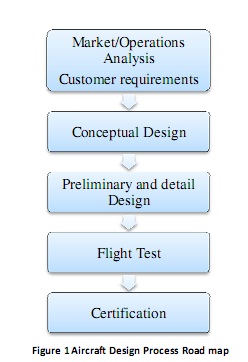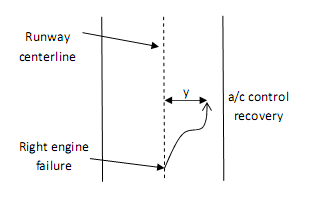Introduction
The FAR (Federal Aviation Regulations) Part 25 are a set of airworthiness standards for airplanes in the transport category. These regulations are generally difficult to understand due to the non-straightforward nature of the language used.
As a part of this study, the sections pertaining to stability and control FAR requirements were studied. The main aim of the study was to understand each requirement and propose a procedure to evaluate that particular requirement. The report starts off with the control requirements and the stability part is handled later. The analysis of each requirement has been started by elaborating in brief the main requirement of the regulation. Then an approach to evaluate the regulation has been proposed by considering the Regional Transport Aircraft (RTA-70) as the test case. The main focus of the study is to provide a generic process that may be used for the future transport aircrafts also. Interestingly the whole study used just basic flight mechanics equations to draft this process.
The FARs are quite fun to read and and would give an idea of the complex procedure through which an aircraft design has to go through. Refer to the following link for the complete set of FAR 25 standards: http://ecfr.gpoaccess.gov/cgi/t/text/text-idx?c=ecfr&rgn=div5&view=text&node=14:1.0.1.3.11&idno=14
Overview of Project

The above figure illustrates a general Aircraft Design Process. 'Certification' part is being focused at as a part of this project. As can be seen, certification is a very important part of aircraft design and drives the design to a certain extent. This is true especially in the case of stability and control system of the aircraft.
Without going into too much detail, I'll explain one of the regulations in brief. This should give an idea as to how these airworthiness standards make our flight 'safe'. One of the most critical cases which is considered is an engine failure during take-off. During take-off, the aircraft employs its wing flaps (for getting maximum lift). Suppose one of its engine fails, the pilot must be able to control the aircraft and bring it back to safety. Consider the following figure:

According to FAR Sec. 25.149 (e), the minimum control speed of the aircraft is to be demonstrated during the take-off run, at which, when the critical engine is suddenly made inoperative, it is possible to maintain control of the airplane using the rudder alone (without the use of nose wheel steering) and the lateral control to the extent of keeping the wings level to enable the take-off to be safely continued using normal piloting skill.
The regulation specifies that in the determination of VMCG, the path of the aircraft from the point at which the critical engine is made inoperative to the point at which recovery to a direction parallel to the centerline is completed may not deviate more than 30 feet laterally from the centerline at any point. The minimum control speed must be established with-
- The a/c in the most critical take-off configuration and trimmed for take-off
- Maximum available take-off power/thrust on the operating engine
- The most unfavorable center of gravity and a/c weight
- Rudder pedal force limited to 150 pounds
So the above regulation was converted into equations using the General Flight Mechanics Equations. Using Microsoft EXCEL, the evaluation procedure was made user friendly and generic. This was the gist of the project. The project needed the basics to be sound. Since I was doing the Flight Mechanics course during the semester, it helped.
How did the project help me?
This project gave me an opportunity to work on an ongoing aerospace project in India (RTA-70). During the course of the project, I got to interact with NAL (National Aerospace Laboratories) scientists. On the academic front, the project made my flight mechanics pretty sound. Many would agree that after you graduate from IITB as an Aerospace Engineer, at least you should know you flight mechanics right. This gives you confidence to talk on something about Aerospace when you are asked by random people to give some Aerospace fundae!
To know more about RTA-70, visit:
http://www.globalsecurity.org/military/world/india/rta-70.htm
http://en.wikipedia.org/wiki/HAL/NAL_Regional_Transport_Aircraft
http://www.flightglobal.com/blogs/asian-skies/2010/03/pictures-india-reveals-details.html
